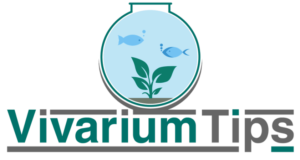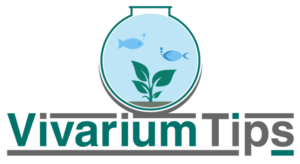For many owners of vivarium tanks, owning springtails can serve your ecosystem with great benefits! For tank owners deciding whether to add springtails or not, you might’ve come across this one specific question.
What do springtails eat? What to feed springtails? What, how, why?
Yes – I agree. When you’re adding a completely new type of species to your ecosystem, the questions piling up can be quite overwhelming.
Fortunately, for you – this guide will cover it all. To give you a short answer, springtails consume:
- Decaying Matter (Plants, Animals, Etc.)
- Mold
- Bacteria
- Fungi
There’s more to that than you should know.
In this guide “What To Feed Springtails: Cheat-Sheet For Dummies,” you will learn:
- The brief introduction of springtails
- The benefits of having them in your ecosystem
- What you can feed springtails to sustain your army
Below is the table of content for this guide. Go ahead and jump straight to the section you’re looking for, but I recommend reading from beginning to end just to avoid missing important pieces of information.
Disclaimer: There may be Amazon affiliate links on VivariumTips.com – When users purchase through an affiliate link, there will be no additional cost to the purchaser. Instead, I will earn a commission from your purchases.
What Are Springtails?
For those who are curious about springtails, they are tiny hexapods that can survive harsh temperatures by using proteins in their body. These little critters can largely impact the ecosystem in positive ways and I’ll tell you why in a moment.
Did you know?
The name, ‘snow fleas’ describes springtails due to their ability to move from place to place. And no – these guys aren’t fleas!
According to Wikipedia’s description of springtails, their scientific name is Collembola. There are certain types that vivarium owners love:
- Temperate Springtails
- Tropical Springtails
I even wrote an article recently about the difference when it comes to temperate vs. tropical springtails. This might help provide you with an idea of what to get for your tank!
The Benefits of Springtails
The reason why many individuals are interested in keeping springtails in their tank is due to the numerous benefits that these creatures hold.
List of Benefits:
- They feed on decaying matter. You don’t want dead stuff in your tank rotting and the removal process for tanks with tons of litter can overwhelm a person.
- Springtails can reproduce at a decent rate, which can also serve as little meals for your pets. Springtails dinner buffet style for your pets?
- They can travel and clean your substrates with dead stuff like worms, flies, etc.
- They can produce a positive type of fungi in your garden.
- Mold control! Springtails will consume unnecessary mold wherever it goes! I even wrote an article about using springtails as mold control – I highly urge you to check it out.
These little critters are important to the ecosystem as you can already see. When your mini-ecosystem is dealing with mold or potential problems, having springtails can be an effective solution.
What Do Springtails Eat?
Did you already make the decision on keeping springtails in your tank? Let’s discuss the type of things you can feed these little critters.
Decaying Plant/Animal Matter
Whether it’s your garden, nature, or your mini-ecosystem – we can agree that these dead plants can create an upsetting image in the person’s eyes.
With springtails, they will feed on these decaying plants, and in return – they will create a cleaner environment.
After all – these guys can be a great meal to bigger creatures in the wild. They can reproduce quickly depending on the type of environment they’re in.
Dealing with dead worms, insects, etc.? Springtails, like zombies will feed on these guys.
Mold, Mold, And More Mold…
Ahhh… having mold is every person’s worse enemy. They’re useless, they grow on you, and can cause damage. Well – springtails love to consume them!
Did you know?
If you encounter springtails in your home (hopefully, not), there’s a chance that you might be dealing with serious mold growing somewhere. You should call an expert before the damage becomes even worse!
Check this out:
The article above is for vivarium owners only! This might give you a few great ideas to maximize your usage of springtails.
Bacteria
Vivarium owners can all agree that having bad bacteria can cause a lot of harm and damage to their tank/ecosystem. With springtails, they will consume bacteria and help clean your tank.
Oh hey – the circle of life. They will serve as a great meal for your reptiles/aquatic pets as well!
What To Feed Springtails?
Now you might be wondering – since springtails can feed on all of the stuff mentioned above, should you be feeding them as well?
Feeding them isn’t costly! They are your janitors after all, so maybe we should start paying them. 💡
Sure – let’s pay them with more food!
If you ever believe that there’s a shortage of food for your springtails, you can try feeding your springtails:
- Fish Food (flakes, pellets, etc.)
- Dry Baker’s Yeast
- Brewer’s Yeast
With brewer’s yeast, the cost averages out to a dollar a pound. This can last an entire year for most tank owners!
- Uncooked Rice
- Insect Parts
- Instant Oat Cereal
From collecting and gathering data online, it appears that most people prefer and recommend brewer’s yeast the most.
You can check out the pricing here.
With brewer’s yeast, you can sprinkle the surface lightly.
From VivariumTips,
Hopefully, this guide will give you an idea of what to feed springtails. In my opinion, you don’t really have to feed them as often. They will feed on unnecessary waste wherever you place them.
You should feed them only if you believe that there’s a shortage of food for them. By feeding them properly, the population of springtails should be able to balance itself.
If you enjoyed “What To Feed Springtails: Cheat-Sheet For Dummies,” you might also enjoy these springtail-related articles:
- Temperate Vs. Tropical Springtails
- Finding Springtails For Sale Online
- Using Springtails As Mold Control
- How To Catch Springtails In The Wild?
- How To Remove Mites In Springtail Culture?
If you have any springtail-related questions, feel free to comment below!
You can support VivariumTips.com by sharing any articles on this blog with a friend or community! 🙂

